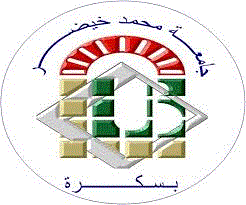| Titre : | Smart Health Care System For Skin Cancer Diagnosis using CNN architecture |
| Auteurs : | Moufida Ben Khalfallah, Auteur ; Sadek Labib Terrissa, Directeur de thèse |
| Type de document : | Monographie imprimée |
| Editeur : | Biskra [Algérie] : Faculté des Sciences Exactes et des Sciences de la Nature et de la Vie, Université Mohamed Khider, 2022 |
| Format : | 1 vol. (1 p.) / couv. ill. en coul / 30 cm |
| Langues: | Anglais |
| Résumé : |
Skin cancer is among the most common malignancies,its prevalence is expected to increase in the coming decade. Artificial intelligence is a promising solution to the problem of providing high-quality care to patients in areas where dermatologists are lacking. The use of automated applications for accurate classification of skin lesions from digital pictures has made significant progress. The development and construction of a deep Learning method for dermoscopic images categorization of the public dataset ISIC 2019 are discussed in this work. We used the ResNet-18 architecture to build a deep learning model to reliably identify ermoscopic pictures of skin lesions into one of eight disease categories. Using our proprietary model, we reached a balanced validation accuracy of 74% besides to the training accuracy of 100% |
| Sommaire : |
Contents Abstract i Résumé . ii Keywords .. iii List of figures iv List of tables . vii General Introduction 1 1 Background . 1 2 Problematic . 2 3 Project Objective . 3 State Of The Art 3 I Main Concepts 4 Introduction 5 1 Skin Cancer . 5 1.1 Definition 5 1.2 Types of skin cancer 5 1.3 Definition of a skin lesion 6 2 Computer Aided Diagnosis System 7 3 Artificial Intelligence (AI) 7 3.1 Definition 7 4 Machine Learning 7 4.1 Definition 7 4.2 Machine Learning Process : 7 4.3 Machine Learning Approaches8 5 Deep Learning 9 5.1 Definitions: 9 5.2 Deep learning Evolution 9 5.3 Applications 10 5.4 The main components of a deep learning structure 10 5.5 Process of deep Learning Algorithms . 16 6 Deep Learning Methods 16 6.1 Backpropagation: 17 6.2 Stochastic Gradient Descent: 17 6.3 Learning Rate Decay 17 6.4 Dropout:17 6.5 Max Pooling: 17 6.6 Batch Normalization: 18 6.7 Skip-gram: 18 6.8 Transfer Learning: 18 7 Deep Learning Frameworks 19 8 Types of Deep Learning Algorithms 19 8.1 Convolutional Neural Networks (CNN’s) 20 8.2 Long Short Term Memory Networks (LSTMs) 34 8.3 Recurrent Neural Networks (RNNs) 35 8.4 Generative Adversarial Networks (GANs) 35 8.5 Radial Basis Function Networks (RBFNs) 36 8.6 Multilayer Perceptrons (MLPs) 36 8.7 Self Organizing Maps (SOMs) 37 8.8 Deep Belief Networks (DBNs) 38 8.9 Restricted Boltzmann Machines (RBMs)38 ixCONTENTS CONTENTS 8.10 Autoencoders39 Conclusion . 39 II Requirement analysis Process 40 Introduction . 41 1 Problem description : 41 2 Required Tools 41 2.1 Required Programming Langages 41 2.2 Required Softwares 43 3 Chosen Deep Learning Model :. 44 3.1 Employed Model’s Architecture 45 4 Employed Dataset : 46 4.1 ISIC 2019 46 4.2 Dataset issues .47 4.3 Dataset’s solutions for the previous mentionned problems 47 5 Use Case Diagram . 48 Conclusion . 48 III Static & Dynamic Design 49 Introduction 50 1 Static Design 50 1.1 Relational data model 50 2 Dynamic Design . 51 2.1 Sequence diagram 51 2.2 Navigation model 52 2.3 The proposed method . 52 Conclusion 53 IV Software illustration & Deep learning model implementation 54 Introduction 55 1 Software implementation 55 xCONTENTS CONTENTS 1.1 Patient management system 55 1.2 Patient Dignosis 56 1.3 Statistics 56 2 ResNet-18 implementation 57 2.1 Data preparation(Data normalization, Data augmentations, Data balancing, Use of metadata, Image Normalization):57 2.2 Model Training and Evaluation64 2.3 Validation and Metrics 65 Conclusion 72 General Conclusion 74 |
Disponibilité (1)
| Cote | Support | Localisation | Statut |
|---|---|---|---|
| MINF/748 | Mémoire master | bibliothèque sciences exactes | Consultable |





